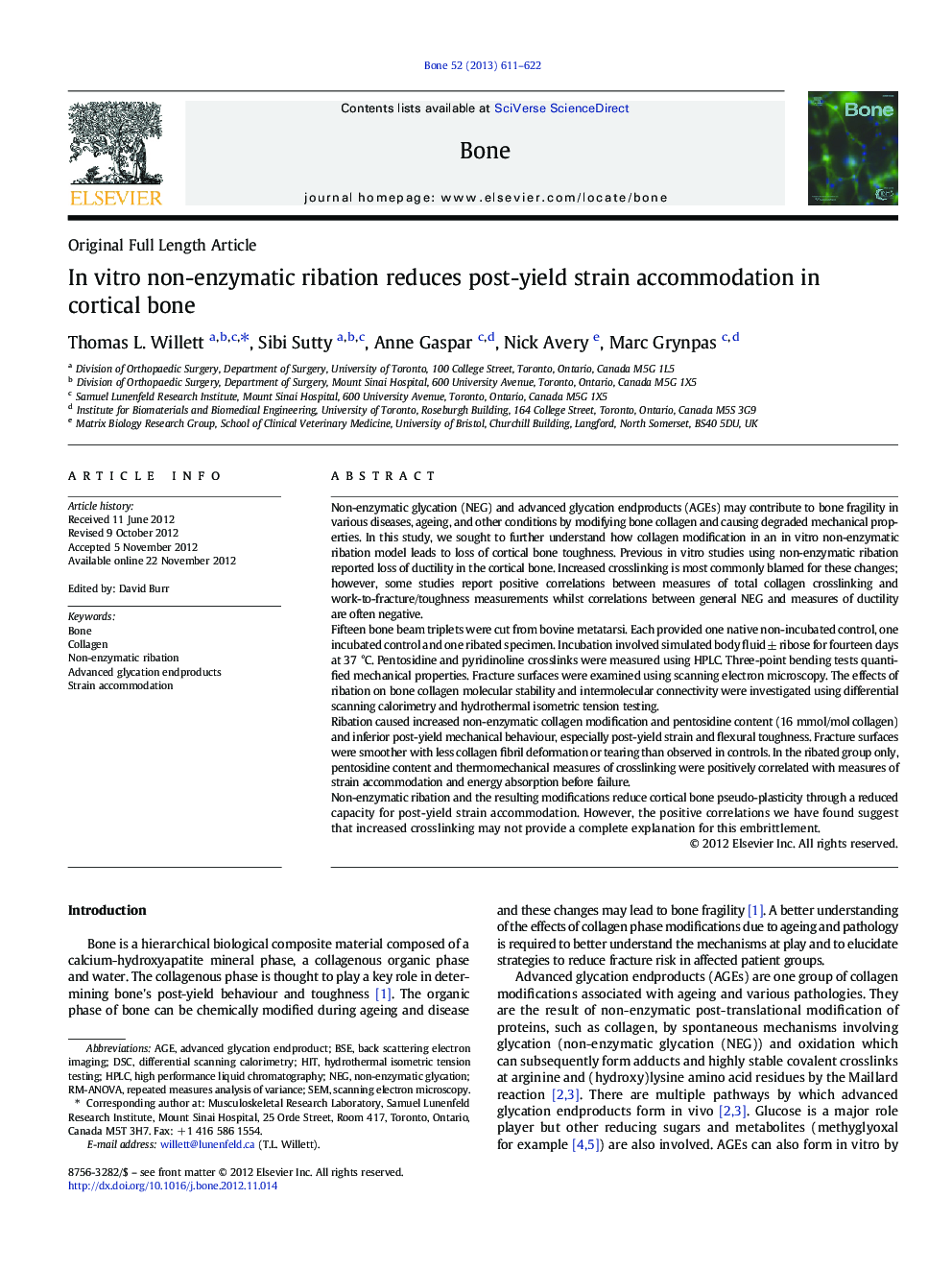| کد مقاله | کد نشریه | سال انتشار | مقاله انگلیسی | نسخه تمام متن |
|---|---|---|---|---|
| 2779340 | 1153267 | 2013 | 12 صفحه PDF | دانلود رایگان |

Non-enzymatic glycation (NEG) and advanced glycation endproducts (AGEs) may contribute to bone fragility in various diseases, ageing, and other conditions by modifying bone collagen and causing degraded mechanical properties. In this study, we sought to further understand how collagen modification in an in vitro non-enzymatic ribation model leads to loss of cortical bone toughness. Previous in vitro studies using non-enzymatic ribation reported loss of ductility in the cortical bone. Increased crosslinking is most commonly blamed for these changes; however, some studies report positive correlations between measures of total collagen crosslinking and work-to-fracture/toughness measurements whilst correlations between general NEG and measures of ductility are often negative.Fifteen bone beam triplets were cut from bovine metatarsi. Each provided one native non-incubated control, one incubated control and one ribated specimen. Incubation involved simulated body fluid ± ribose for fourteen days at 37 °C. Pentosidine and pyridinoline crosslinks were measured using HPLC. Three-point bending tests quantified mechanical properties. Fracture surfaces were examined using scanning electron microscopy. The effects of ribation on bone collagen molecular stability and intermolecular connectivity were investigated using differential scanning calorimetry and hydrothermal isometric tension testing.Ribation caused increased non-enzymatic collagen modification and pentosidine content (16 mmol/mol collagen) and inferior post-yield mechanical behaviour, especially post-yield strain and flexural toughness. Fracture surfaces were smoother with less collagen fibril deformation or tearing than observed in controls. In the ribated group only, pentosidine content and thermomechanical measures of crosslinking were positively correlated with measures of strain accommodation and energy absorption before failure.Non-enzymatic ribation and the resulting modifications reduce cortical bone pseudo-plasticity through a reduced capacity for post-yield strain accommodation. However, the positive correlations we have found suggest that increased crosslinking may not provide a complete explanation for this embrittlement.
► In vitro non-enzymatic ribation model reduces strain accommodation before failure and toughness in bending.
► Scanning electron microscopy reveals strikingly reduced evidence of collagen tearing in ribated specimens compared to controls.
► Ribated specimens display positive correlations between post-yield strain and crosslinking; crosslinking may not completely explain embrittlement in this model.
Journal: Bone - Volume 52, Issue 2, February 2013, Pages 611–622